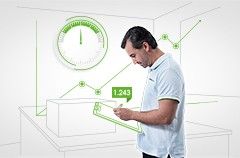Physical contamination detection
Contaminated products can cause serious harm if they reach a consumer; they can also cause an enormous headache for manufacturers. They result in costly recalls and retailer fines, as well as damage to brand reputation. To remain compliant with industry regulations and retailer standards, manufacturers must have contamination detection capabilities. Product inspection systems can detect a variety of different contaminants, including metal, glass, plastics, mineral stone, calcified bone, and rubber. Depending on the specific requirements of your application, you may require either a metal detection or an x-ray system (or both).
Package fill control and inspection
Unnecessary product giveaway can result in lost profits, while underfilling of products can result in fines or even a product recall. It is important to have a method for verifying that the required amount of product is present within its packaging. Inline checkweighing systems verify the weight of every single product on the production line and can even provide real-time feedback and control of filling systems to help avoid both over and underfilling of product packaging, in accordance with relevant weighing regulations. X-ray systems can also perform checks on products to verify kit completion for packages with multiple components.
Content and package quality inspection
There are a number of factors that go into making sure final products look their best and are not at risk of being damaged or spoiled in transit. Detecting packaging faults early in the process maintains your product quality, while also reducing the need for product re-work and potential waste further down the processing line. Vision systems inspect every package as it travels on the production line, verifying packaging quality.
Label inspection
Product labeling is the final line of communication between producer and customer. It is also an easily prevented source of product recalls. Vision inspection systems verify the presence, contents, and readability of product labels to prevent label mix-up as well as label data and quality issues.
Product integrity inspection
Product integrity refers to the completeness or wholeness of a product. This can refer to everything from the presence of all expected pieces in a kit to damaged or broken goods contained within a case. Product inspection equipment can identify damaged, underfilled or incomplete products through a variety of methods, from checkweighing to vision inspection to x-ray inspection.













